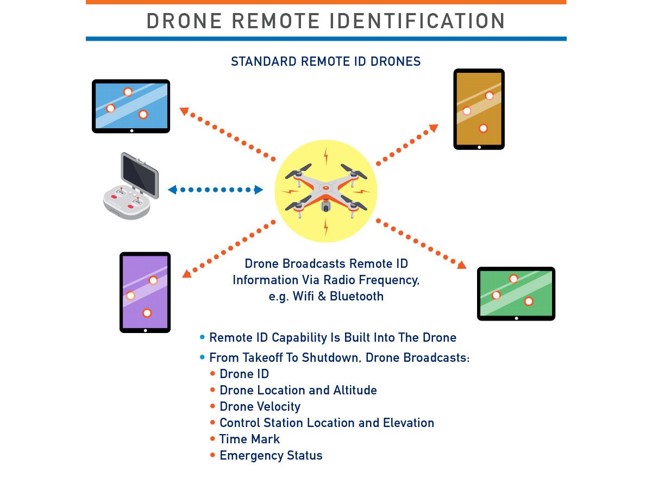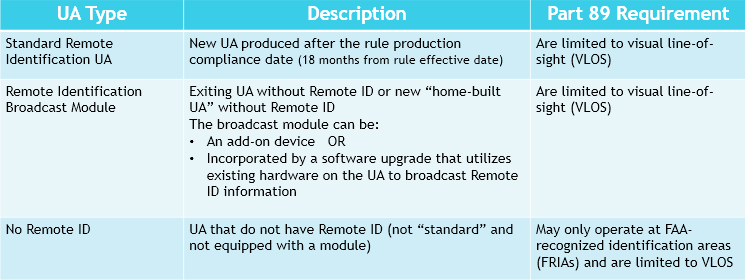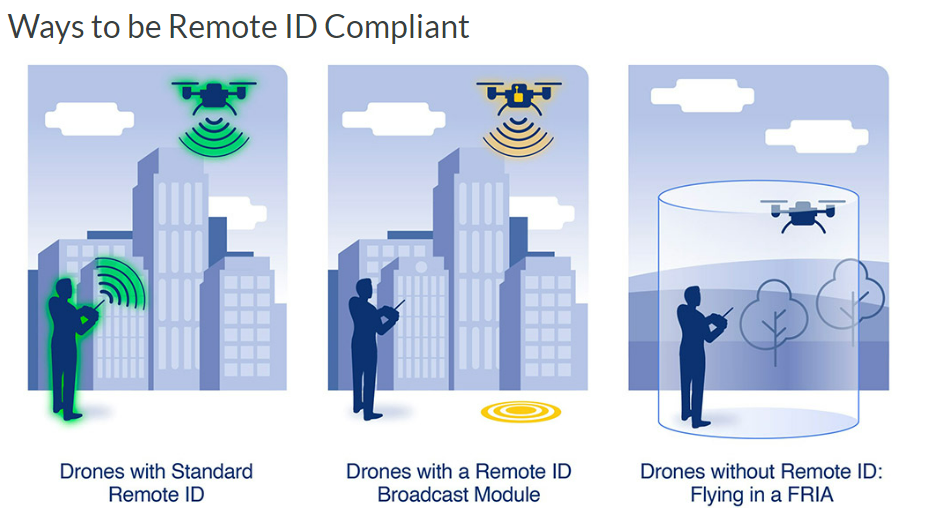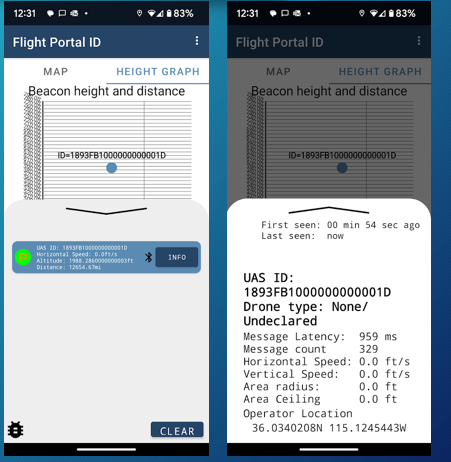Federal Regulations and what YOU need to know.
Understanding what the Remote ID (RID) requirements are, from the FAA, need not be complicated.
Imagine a car screaming at double the speed limit zipping past you in the right lane. Just a blur of color, no identifying marks, no license plate, and no sense of IF they will get caught. Swerving in and out of traffic causing hazardous situations. If you are anything like me, I hope they get caught fast before someone get’s hurt.
This is the FAA’s stance on rogue drone operations in congested and controlled airspace. Read more from the FAA on this.
What is Remote ID
- RID is a “Digital License Plate” or an ankle monitor, depending on your point of view.
- Remote ID allows others, particularly the FAA and Law Enforcement, to identify (ID) aircraft, and dependent upon access, pilot location.
What RID Isn’t
- RID/Remote ID is not the same as RFID, or “Radio Frequency Identification.
- RFID uses radio “pulses” to trigger return information from a security tag, or perhaps an inventory control tag.
- RFID requires a triggering antenna to “query” the RFID device.
- RFID does not offer range, and is essentially passive on the mobile device or product.
- RFID in general, is quite inexpensive to develop and implement.
Drones with Remote ID (RID) broadcast a signal when they are in flight.

Remote ID Requirements – New Rules as of April 21, 2021
As of April 2021, the FAA notified the UAS industry that Part 107 will require the Remote Identification (RID) of unmanned aircraft systems is stated in: 14 CFT Part 89.
Part 89 Remote ID requirements apply to ANY UNMANNED AIRCRAFT (UA) THAT IS REQUIRED TO BE REGISTERED UNDER PARTS 47 AND 48.
This includes all UA operated under part 107 because 107.13 requires registration to operate under part 107.
UA that weigh’s LESS THAN .55lbs. ARE EXCEPTED, UNLESS they are operated under part 107, in which case they must be registered regardless of weight.
The Part 89 requirements have A COMPLIANCE DATE OF 30 MONTHS FROM THE FINAL RULE EFFECTIVE DATE.
Part 89 establishes operating requirements: however, it is not an operating rule. Part 89 operating requirements are IN ADDITION TO THE OPERATING RULES OF PART 107.
After the compliance date, persons operating UA MUST FOLLOW ONE OF THREE SETS OF OPERATING REQUIREMENTS, depending on a UA type.


Part 89: Transponders and Surveillance Technology
There are concerns that this technology will be available to the general public and potentially cause issues for commercial drone pilots. Fortunately, the FAA has limited the scope of use of RID on drones.
- Use of the following technology is PROHIBITED under part 107, unless authorized by the FAA:
- Air Traffic Control (ATC) transponders
- Automatic Dependent Surveillance-Broadcast (ADS-B) out
Remote ID Requirements
Remote ID regulation requires Remote ID to be functional and installed on all UAS in the United States beginning September 16, 2023. However, due to technical challenges, budget holds, and any number of other explanations, remote ID ENFORCEMENT has been delayed until March 16, 2024.
What is being broadcast over RID?
•The RID system on the aircraft must broadcast (from power on to power off):
- Drone ID (What the pilot named it)
- The RID system on the aircraft must broadcast (from power on to power off):
- Drone ID (What the pilot named it)
- Drone Location/Altitude
- Drone Heading/Velocity
- Control Station Location/Elevation
- Time Stamp Emergency Status
How do you know RID is broadcasting?

- Pilots are required to check/verify that RID is broadcasting from start to end of flight.
- A pilot might ‘trust’ the lighted indicator, or dive a little deeper by using an application
For more on this subject, be sure to watch Brady’s Lunch & Learn on our Youtube channel.
By Brady Reisch, TLP, Director – VDC Technical Services
Brady’s Contact Information
Let us know what other subjects you would like TLP to post about. Email us with your ideas [email protected]
Sign up for our eNewsletter to keep in touch with all our industry news.


Leave a Reply